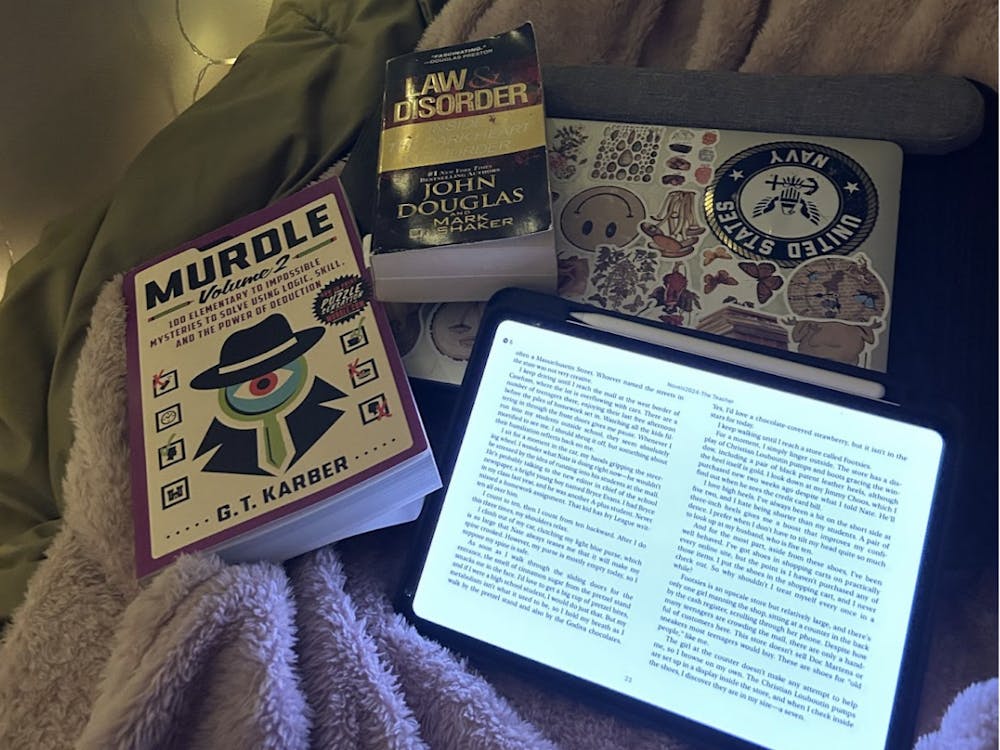Drawing sizable attendance from the Hopkins community, The Sheridan Libraries unveiled an exhibit showcasing nearly 70 rare items of literary deception at the George Peabody Library. “Fakes, Lies and Forgeries” opened on Sunday, Oct. 5 and will remain open through Feb. 1.
This display takes its pieces from the extensive Arthur and Janet Freeman Bibliotheca Fictiva Collection, which was donated to the University in 2011. Assembled over a 50-year period, the Bibliotheca Ficitva contains approximately 1,700 forged items spanning from the ancient world to the 20th century.
“The Arthur and Janet Freeman Bibliotheca Fictiva Collection is the largest and most comprehensive collection of rare books and manuscripts on the mysteries of forgeries in the world,” Sheridan Dean of University Libraries and Museums Winston Tabb said.
“This collection is indisputably without equal. I’m tempted to say, ‘trust me on that one,’” Tabb added. “However, given the focus of much of this exhibition, that might not be prudent.”
The most notable falsifications within the “Fakes, Lies and Forgeries” collection include editions of Jesus’ posthumous “Letter from Heaven,” eye-witness accounts of the fall of Troy, a first-hand account of the discovery of Homer’s tomb, descriptions of Noah’s settlement after the Great Flood and the conspiratorial Protocols of the Elders of Zion.
“I have too many favorites, but the Jesus forgeries are a hoot,” William Kurrelmeyer Curator of Rare Books & Manuscript Earle Havens wrote in an email to The News-Letter. “So are the archaeological ones that wish to be so sincere, but are preposterous.”
Along with Havens, the curatorial team for this exhibition involves several Hopkins faculty and graduate students, among them Charles S. Singleton Professor of Italian Studies Walter Stephens and Ph.D. candidates. It also includes Denis Family Curatorial Fellows Janet Gomez (Italian), Neil Weijer (History) and John Hoffmann (English).
According to Havens, the Sheridan Libraries expected a crowd of 120 viewers for the grand opening, but approximately 150 people attended. This crowd included a group of students from Professor Patton’s “Great Books at Hopkins” class.
“All of this year’s Great Books at Hopkins faculty are delighted to have been able to bring students to view the ‘Fakes, Lies and Forgeries’ exhibit and its opening celebration this past weekend,” Patton wrote in an email to The News-Letter. “With a multitude of examples, the exhibit (and the newly acquired collection as a whole) provides yet another perspective on the panorama of ‘Great’ literary productions that we have all come to treasure: Odysseus took pride in his abilities as a liar; Dante actually had some people convinced that he himself had traveled down to Hell — they commented on how much darker his hair had become from the heat — and in all likelihood, Shakespeare ‘borrowed’ plots from more sources than scholars have yet been able to fathom.”
“It’s all part of the human love of telling tales, playing jokes and getting away with making people believe the impossible,” Patton added. “We had the added pleasure, of course, of introducing students to the beautiful George Peabody Library and encouraging them to continue making use of it during their years here at Hopkins. All in all, it was a splendid event!”
After having ample time to survey the collection, viewers packed the seats inside the Peabody Library to hear members of the curatorial team discuss how the collection itself came into existence and the scholarly implications behind such an exhibit.
In his presentation “(True) Confessions of a ‘Fakes’ Scholar,” Walter Stephens, a professor of Italian Studies at Hopkins, analyzed the benefits of studying forgeries despite some scholars’ initial hesitations.
Stephens conceded that these rare pieces’ contents are, in fact, lies. However, he asserts that the work can also be classified as literature. Not great literature, he claims, but literature with great consequences.
Since the 70s, Stephens has worked on Annius of Viterbo’s Renaissance forgeries. However, besides the work of Stephens and a few other scholars, the study of forgeries has not been a widely explored field. The impact forgeries have had on social history are now being shown through this exhibit.
“Forgery teaches us that our capacity to deceive is a creative one, as much as it is destructive, and is only outmatched by our popular fascination with it and its subversive qualities,” Havens wrote.
Havens also commented on this exhibit’s unique angle, as it displays works not based solely on literary merit, but on historical impact and creative thought as well.
“Collections of primary research materials of real research value can just as well invoke our lesser angels, our subversive instincts as a species and as members of complex cultures,” Havens wrote. “Forgeries ‘merit’ our attention, even perhaps in some cases our admiration as manifestations of virtuosity. They tell us a great deal about ourselves, and about our predecessors, their passions, prejudices, burning desires and credulity all at once. I find the subject endlessly fascinating when thought of in these ways.”
The Hopkins community is encouraged to stop by the free exhibit and study the unusual literary texts. It will remain open for about four more months.




